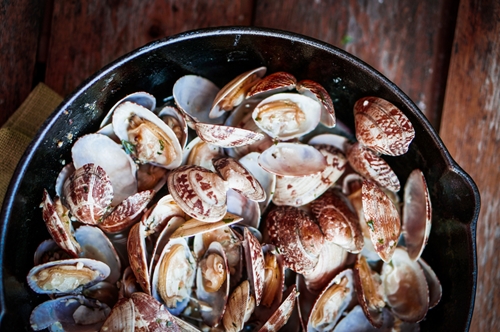Seasoning and Maintaining A Cast-Iron Pan
Anyone who is taking cooking lessons should own at least one cast-iron pan. Cast iron is durable, inexpensive and retains heat better than many other cooking materials. That makes it perfect for searing steaks, roasting vegetables, stir frying or making cornbread, among countless other uses. If you properly care for your cast-iron cookware, it will only continue to cook better over time. Here are some tips for keeping your skillet or pan in great shape:

Seasoning your pan
Cast-iron becomes a nonstick surface only when it is seasoned. Today, many pans come pre-seasoned, but you will otherwise need to prepare it yourself before you start searing meat. Fortunately, this is a simple matter, and the more you use the cast iron in normal cooking, the better seasoned it becomes.
According to The Kitchn, the seasoning process begins by cleaning the pan with warm water and soap. Rinse the pan thoroughly and then dry it off. Meanwhile, preheat the oven to 325 degrees Fahrenheit.
Next, use a paper towel or cloth to apply a coat of oil or fat to the inside of the pan and along the outer rim. For the seasoning, you can choose from a wide range of options, though many use vegetable oil or shortening. Almost any oil will do, or as Wired recommended, you can go with lard.
Set the pan on the oven’s center rack, along with a sheet tray or aluminum foil to catch drippings. Bake the pan for an hour and allow it to cool before removing it from the oven. Wipe any excess oil or fat with a paper towel. Now you have a piece of non-stick, cast-iron cookware that will serve you well for a huge variety of cooking applications.
Cleaning and maintenance
Keeping cast iron in good shape for regular use is not difficult. After you have seasoned the pan, you don’t need to do so again until the surface appears dull or rusty or food begins to stick. Otherwise, repeating the steps every two years or so should be sufficient to maintain a shiny interior that won’t cling to your food.
Most of the time, you can clean your pan by just rinsing it off. Never put the cast iron in the dishwasher, and don’t leave it soaking in soapy water. However, according to Serious Eats, using a little soap as necessary to remove food debris will not harm the seasoning. Also, while you shouldn’t scrape the inside of the pan, flipping a piece of meat or egg with a metal utensil is unlikely to do any damage.
Although proper maintenance is important, Chef J. Kenji Lopez-Alt pointed to Today that cast iron is a hardy material that does not need to be handled gingerly.
“Go to an antique store, and you’ll see cast-iron pans that are 100 years old,” he said. “It’s not a delicate flower but rather as tough of a material as you can get.”
The iron can, nonetheless, rust. To avoid this, Epicurious advised carefully drying a pan after every use, being sure to remove any excess fat or grease. Store it in a cool, dry place with the lid removed.
Removing rust
If rust does gather on a cast-iron pan, it can still be salvaged. Bon Appetit advised that heavily rusted cookware should be placed in a soak of equal parts vinegar and water. Check on the pan after an hour and remove it as soon as the rust dissolves. Otherwise, the acid will begin to affect the iron itself. For this reason, you should skip the soak entirely if there is only a limited degree of rust.
Either way, you will scrub the pan with soapy water until all the rust is gone. Choose a mild detergent and use only lightly abrasive scrubbers, like steel wool, to avoid damaging the pan. Then, dry it off thoroughly and re-season. The pan will be ready for action again in no time.
Cast-iron cookware is perfect for preparing many different dishes night after night. If you purchase a high-quality pan and take good care of it, this is one kitchen tool that will serve you well for many years to come.
Online Culinary School Planner & Checklist
Online Culinary School Planner & Checklist
Find out what a culinary education can do for you.

What might a career in the culinary or pastry arts look like for you? Online culinary school is a fast, affordable way to launch a career in the culinary or pastry arts. Get the workbook to see how it could help you.







Recent Comments